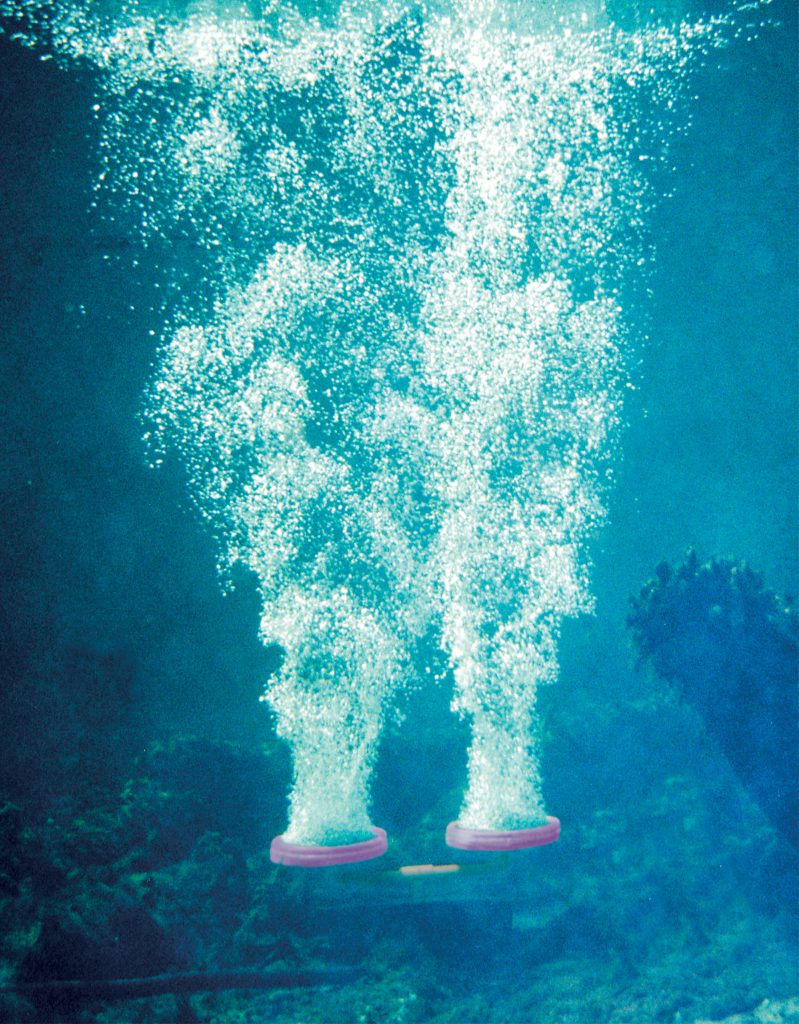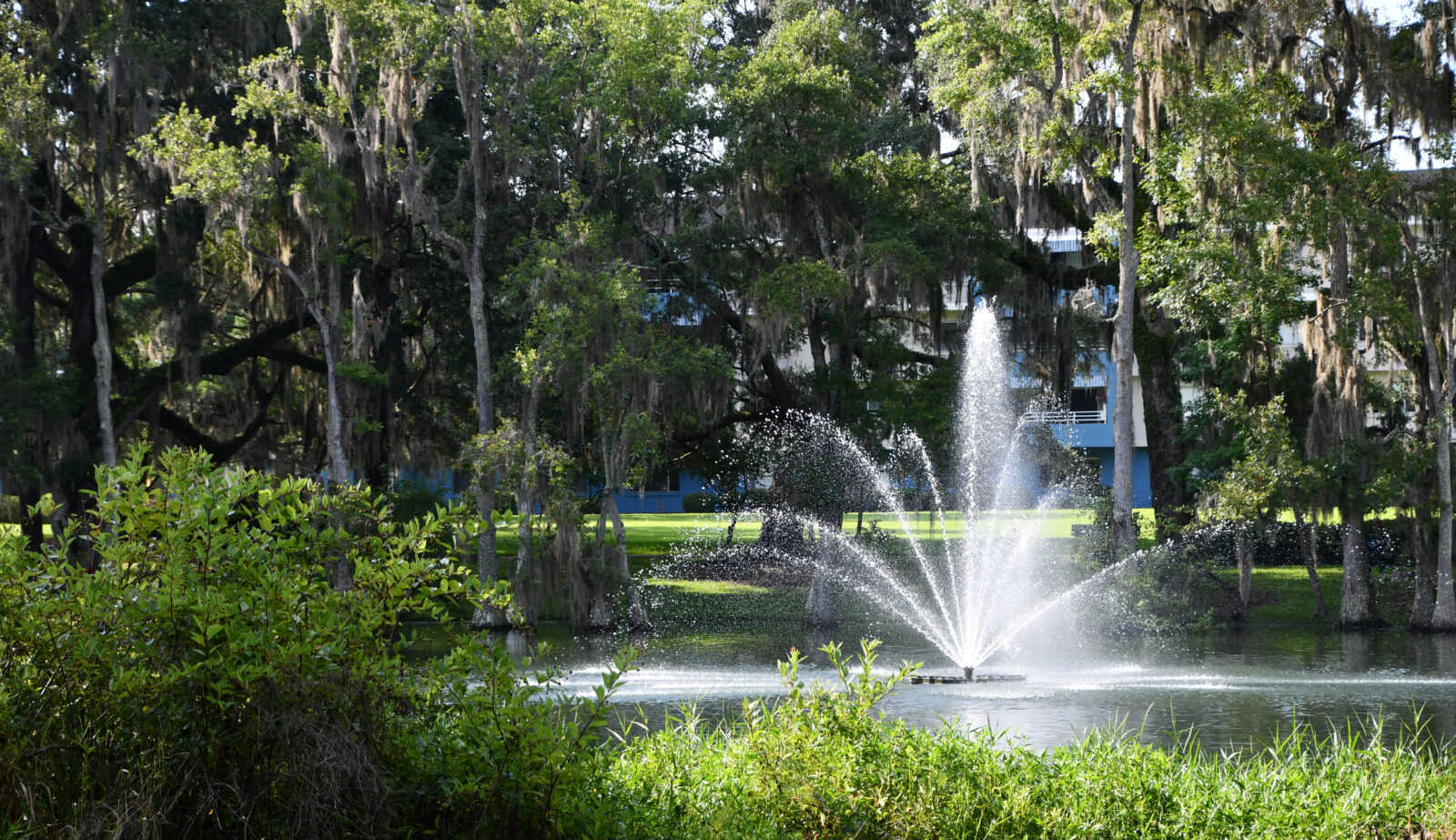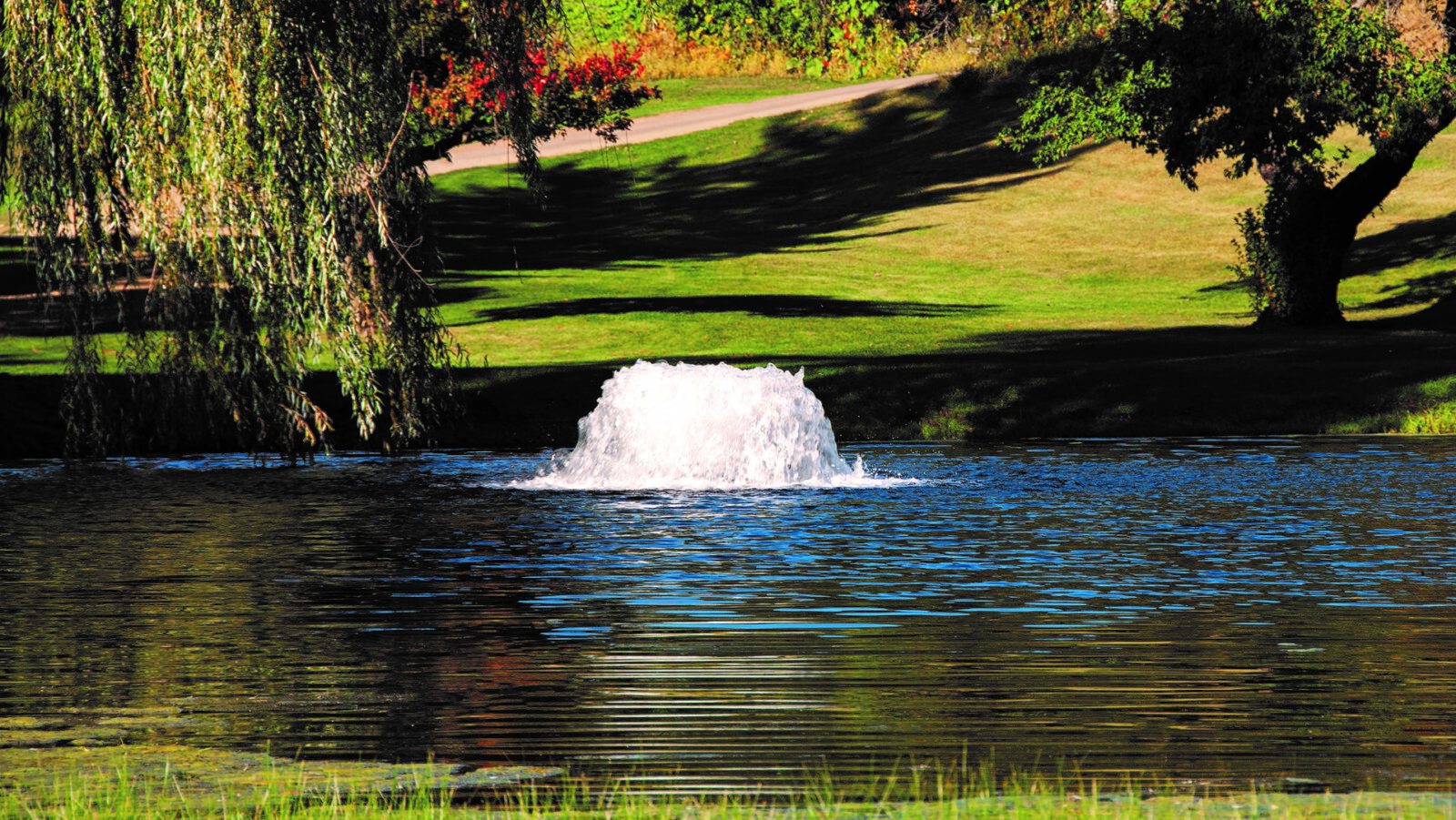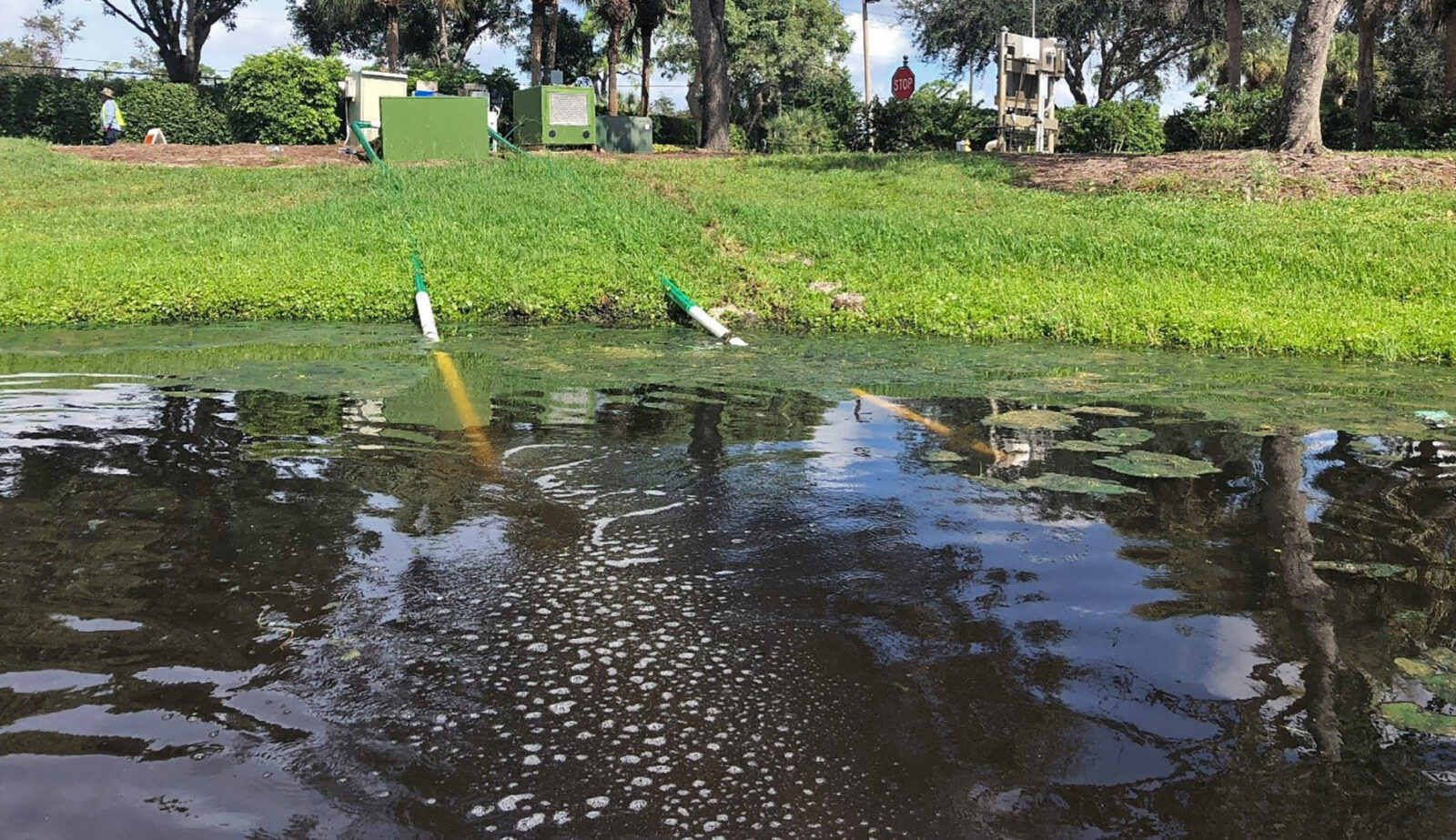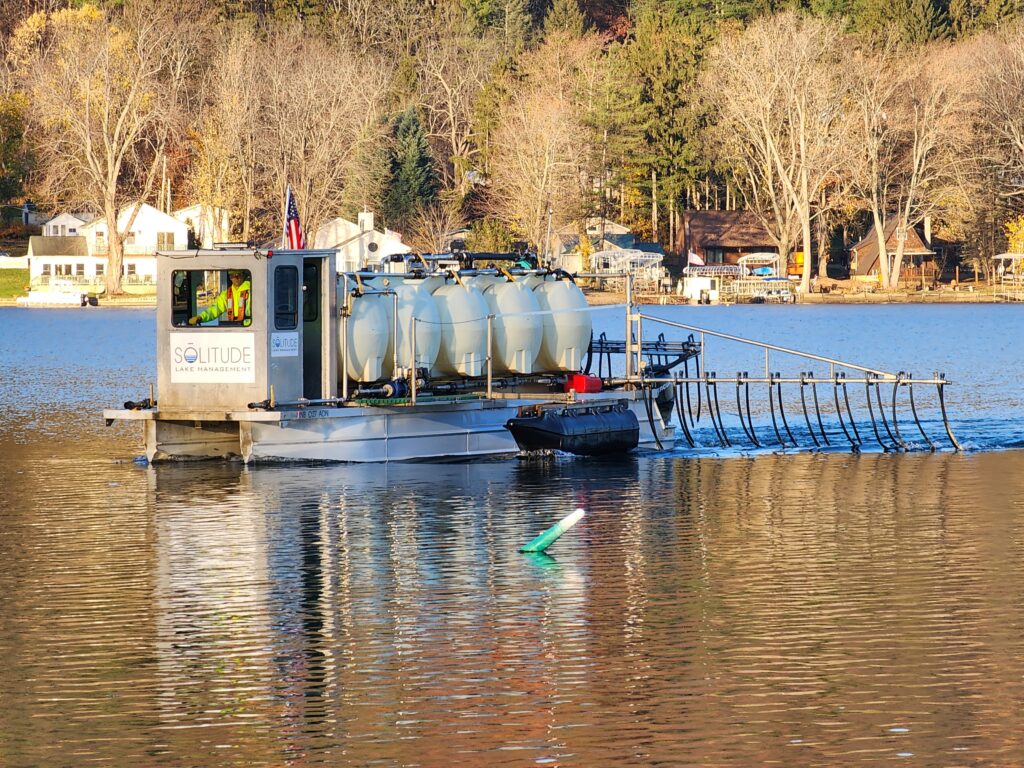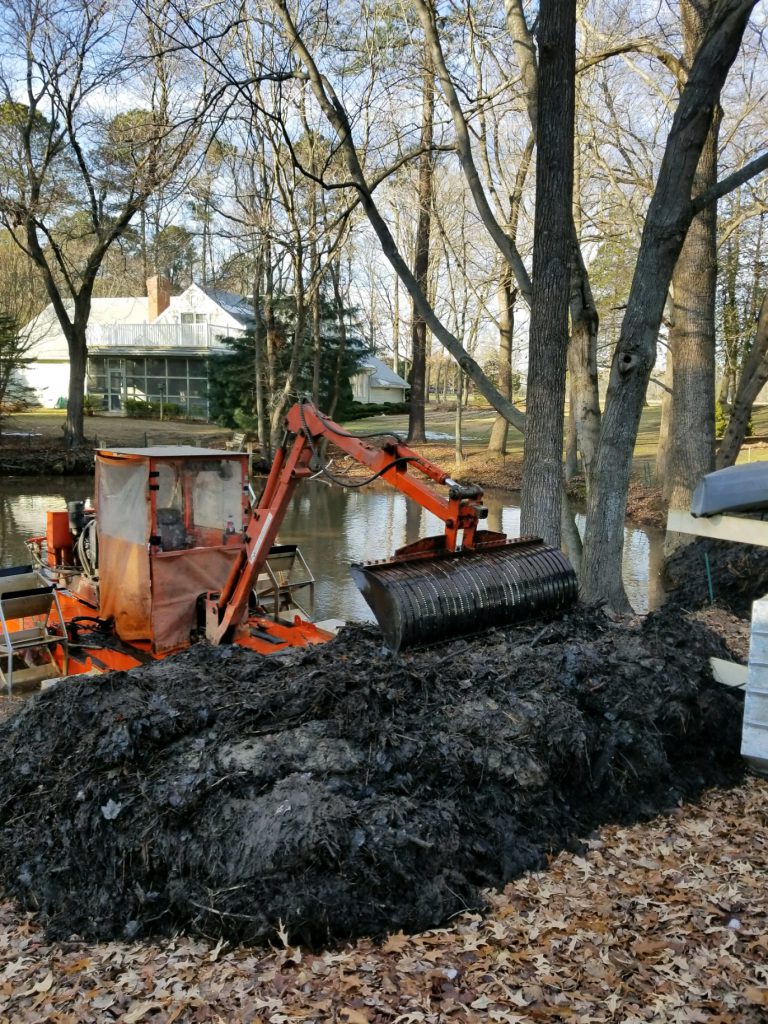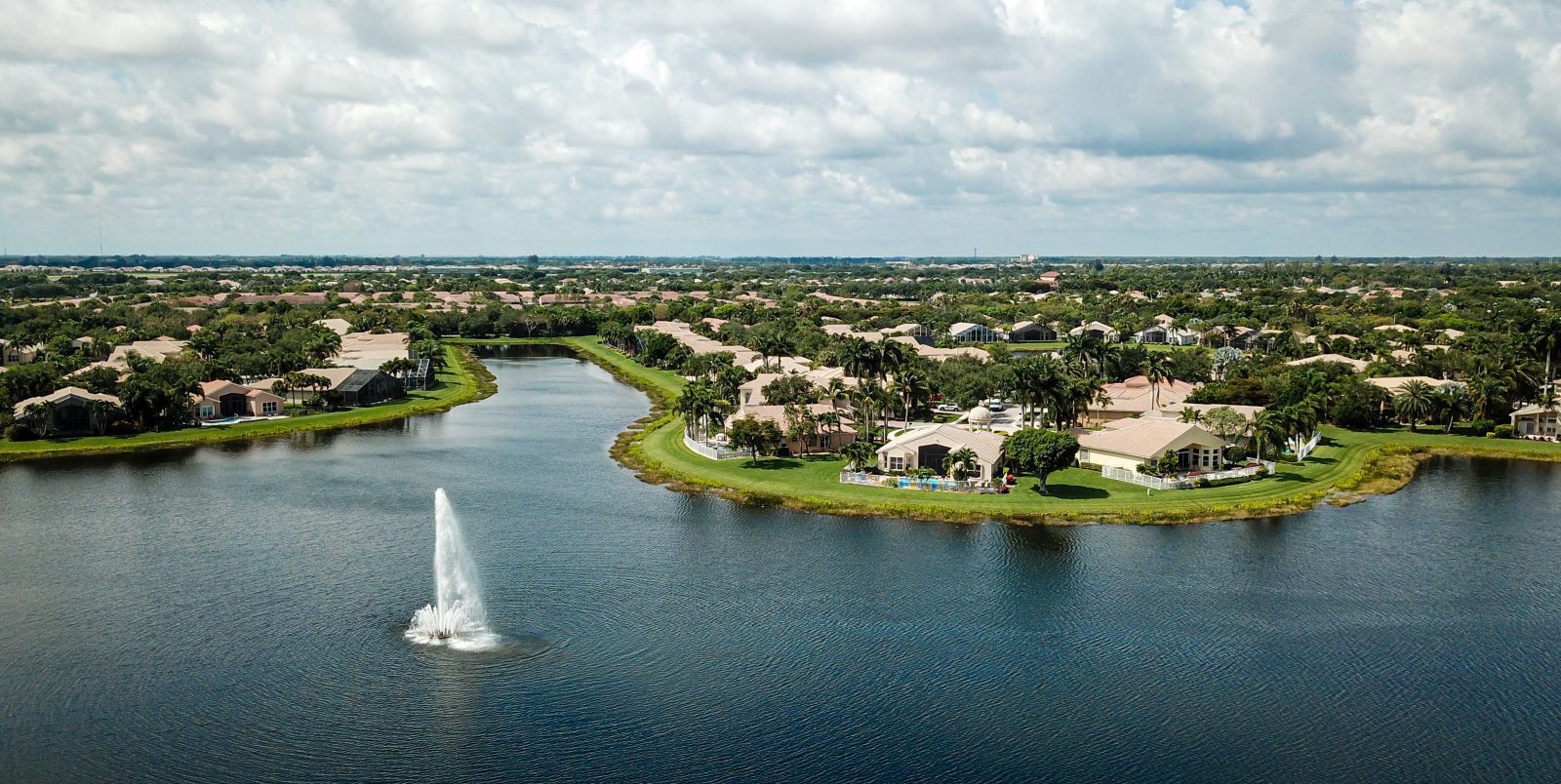
How to Naturally Manage Your Pond
For land owners, golf courses, or communities with waterbodies, the lake or pond is often the most tranquil facet of your property, and water quality is one of the most important aspects of a healthy ecosystem. If water quality is compromised, it often leads to unsightly conditions and an unbalanced aquatic ecosystem. Though herbicides and algaecides can be important tools to utilize when control is needed for Harmful Algal Blooms (HABs) or invasive vegetation infestations, many property owners wish to avoid pesticide use around the home.
Thankfully, environmental planning companies are constantly evolving their proactive management solutions. New techniques, equipment and technologies are making managing your pond easier and more cost-effective to implement:
Natural Management Tool: Aeration
All living organisms need oxygen to survive, but many waterbodies suffer from poor dissolved oxygen levels due to lack of circulation in the water column. This can lead to destratification and increase the chances of a fish kill. Depending on the function of your waterbody and your long-term goals for the aquatic resource, your lake management professional may recommend one of several pond aeration solutions.
Types of Aeration Systems
- Submersed diffused aeration systems provide oxygen and increase circulation of the lake or pond water. This solution helps to provide dissolved oxygen to the entire water column and also keeps the water mixed to avoid stratification, and a layer of low dissolved oxygen, from forming.
- Surface aerators share a resemblance to fountains, but instead of pleasing conical patterns and pretty nozzles, surface aerators run at lower speeds with large propellers that produce a boil-like flow on the surface of the water. Because they maintain strong flow and inject up to 3 pounds of oxygen per horsepower hour into the water, they are an effective tool to help maintain balanced water quality conditions.
- Floating fountains provide oxygen and circulation from the top of the waterbody, as well as decrease mosquito habitat. Floating fountains are a great option for lakes and ponds that serve as focal points for the property as they provide both ecological and aesthetic benefits.
- Waterbodies suffering from the presence of particular algal species may benefit from the introduction of nanobubbles. Nanobubble technology directly saturates the water with up to 79,000x more oxygen than traditional pond aeration systems and can remain in the water column for 2-3 months. Additionally, nanobubbles help create water quality conditions that mitigate the presence of nutrients and toxins. It’s important to note that nanobubbles are not aeration, however, it does help boost dissolved oxygen levels.
Natural Management Tool: Nutrient Remediation
Pond nutrients can be both essential and detrimental to a waterbody. Due to the rise of urban development and pollution, excess nutrients can enter a waterbody through stormwater runoff. Over time, this can stimulate algae growth and increase your lake or pond’s rate of aging, a process called eutrophication.
Types of Nutrient Remediation Solutions
- Phoslock (lanthanum-modified clay) applications can be used to rapidly bind with and permanently removes free reactive phosphorus from the water column before settling to the lake or pond bottom sediments. Once a nutrient bind with phosphorous, it can no longer be used to fuel the growth of nuisance plants or algae.
- Alum (aluminum sulfate) applications are a similar solution for chronic nutrient loading, with a particular use in highly turbid waters. Like Phoslock, Alum binds with phosphorus, inactivating and settling it to the bottom of the aquatic resource, while also remaining available to trap any additional nutrients which may be released over time.
- EutroSORB is a filtration technology designed to rapidly capture phosphorus from the water column. It is most effective in areas of moving water such as stormwater ponds, streams, and canals. Once the filter is full, it is physically removed from the waterbody for off-site disposal
Natural Management Tool: Muck Removal
Over time plants die off and collect in ponds, along with leaf litter and other organic materials. Built-up organic matter, sludge and sediment make a waterbody shallower with each year of accumulation. Increased sedimentation also causes an increase in water temperature by allowing more sunlight to penetrate the water column, thus encouraging increased plant and algae growth.
As a result, dissolved oxygen levels can decrease, threatening native vegetation, releasing undesirable nutrients and contributing to a negative cycle of sedimentation and decay. Eventually, dredging may be the only solution to restore volume to the waterbody, but it can be one of the costliest projects a community or landowner ever faces.
Types of Muck Removal Solutions
- Hydro-raking is an excellent solution for the reduction of bottom muck build-up, debris, and vegetation removal. A mechanical hydro-rake can physically remove built-up organic matter, plants, and debris from the bottom of lakes and ponds up to 15 ft deep. This helps to reduce the overall nutrient load, thwart invasive species growth and minimize common water quality issues.
- Biological dredging is a more cost-effective and low-impact alternative to traditional dredging. Applications of microbial and enzyme-enriched products can be used to naturally metabolize muck and excess nutrients that detract from healthy aquatic ecosystems. When combined with proper aeration and beneficial aquatic plants, the results of biological augmentation are further enhanced.
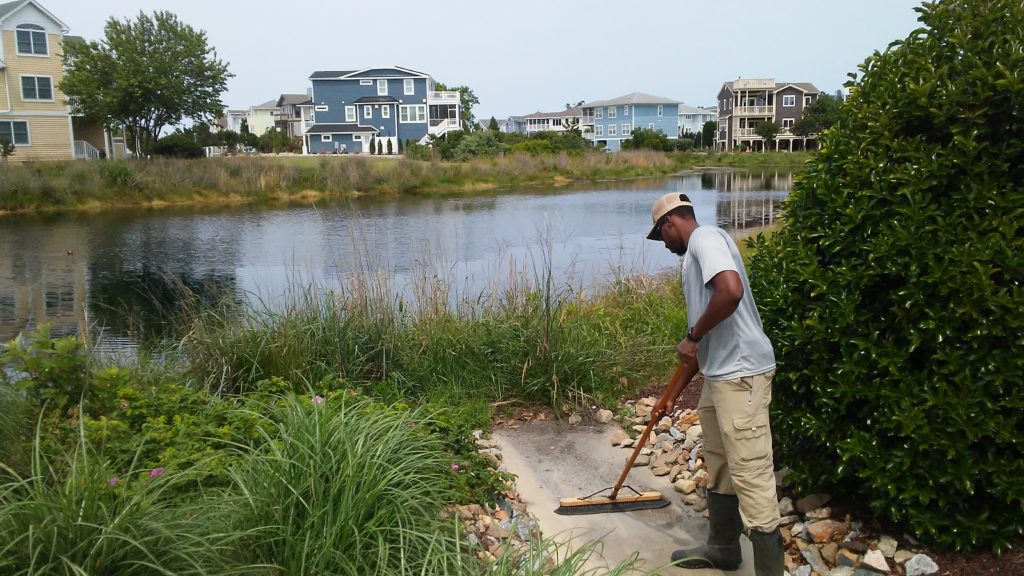
How You Can Help Maintain Clean Water
Proactive management is key to cultivating healthy, long-lasting waterbodies, but these management strategies would not go far without community education. Informing residents and homeowners about the ways they can reduce their environmental footprint and protect nearby water resources helps to ensure preventative strategies are not undermined.
Prevent Nutrient Loading with These Tips
- Use fertilizer without phosphorus and avoid over-fertilizing. Different types of fertilizer serve different purposes, so be sure to follow the directions on the label for safe and proper application.
- Regularly rake and bag leaves, lawn clippings and organic waste to prevent them from flowing into stormwater facilities and over-burdening pipes and conduits.
- Use environmentally-friendly detergents and cleaners when washing vehicles and pressure-washing houses. Look for soaps that are formulated to be biodegradable.
- Create landscaping swales (natural filtering systems) around storm drains and impervious surfaces to prevent lake erosion and help intercept water. Native flowering vegetation, pebbles and river rocks serve as excellent infiltration media when lined along walkways, driveways and stormwater facilities.
- Deter pets and geese from entering waterbodies. An adult Canada goose can produce up to two pounds of droppings each day, which may significantly increase nutrient levels in a short period of time.
- Improve lawn care and gardening practices by planting vegetative buffers to help decrease soil and nutrient run-off.
Maintain Beautiful Lakes, Naturally
Each of these techniques will help enhance the aesthetics and function of your water resources while extending the lifespan of your waterbody. The positive effects of proactive lake and pond management efforts will go a long way in preserving valuable habitat for beneficial wildlife and creating a peaceful, relaxing ecosystem.








